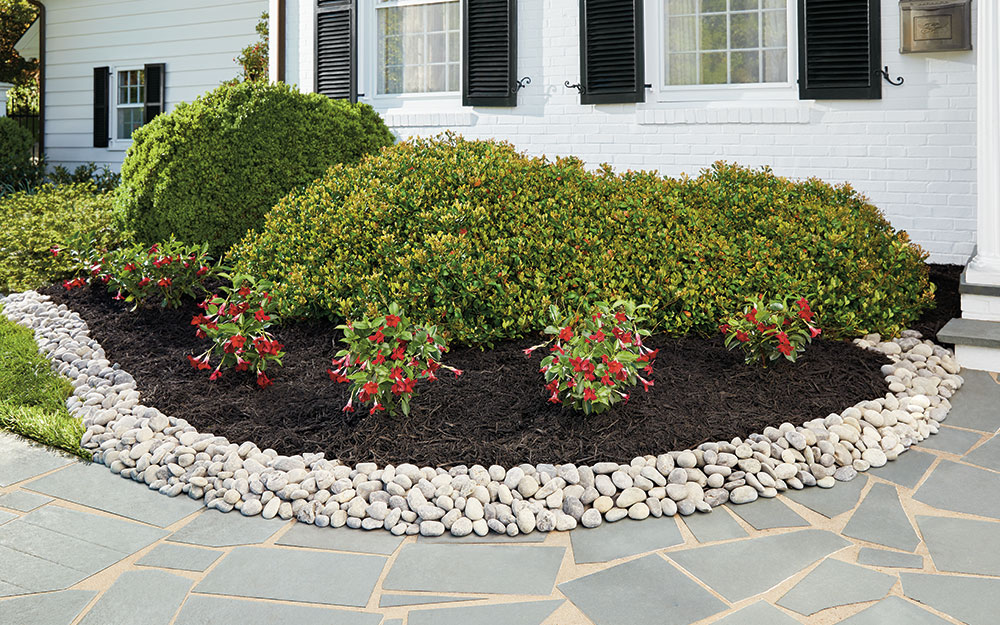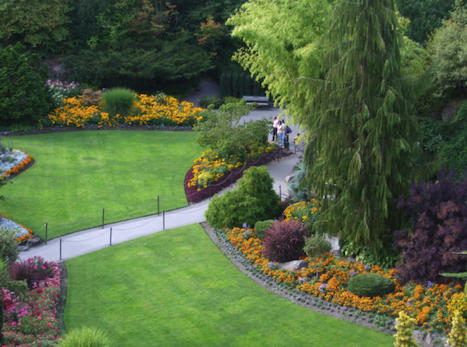Elevate Your Building's Visual With Sustainable Landscape Design Designs and Eco-Friendly Practices

Advantages of Sustainable Landscape Design
Applying sustainable landscaping practices not just preserves all-natural sources yet additionally advertises biodiversity and boosts total environmental health. One significant benefit is the decrease of water intake through the usage of drought-resistant plants, rainfall gardens, and efficient watering systems.
Moreover, sustainable landscaping can improve dirt health and wellness by reducing the usage of chemical fertilizers and chemicals, consequently creating a much healthier setting for plant development and useful dirt organisms. This, subsequently, enhances the overall strength of the landscape to withstand ecological stressors and environment modification effects - lawn cleanup Jacksonville. In addition, lasting landscaping techniques can draw in diverse wildlife, including pollinators like butterflies and bees, fostering a more balanced and vibrant community within the residential property
Incorporating Indigenous Plants
To build on the advantages of sustainable landscaping, a critical concentrate on integrating native plants can further enhance environmental resilience and promote biodiversity within the landscape. Indigenous plants are species that normally happen in a particular area and have progressed to thrive in the local climate, soil problems, and ecological community. By including native plants in landscape design layouts, home owners can decrease water use, lessen the requirement for chemical pesticides and fertilizers, and support the neighborhood wildlife populace.
Integrating native plants also aids in preserving the special personality and identification of an area's flora. These plants typically require less maintenance once established, making them a cost-efficient and lasting landscaping solution in the future. Furthermore, indigenous plants can draw in indigenous pollinators like butterflies and bees, adding to the overall health and wellness of the ecological community.
When selecting native plants for landscaping jobs, it is necessary to pick species that are fit to the particular ecological conditions of the website. Consulting with regional nurseries or herb yards can offer important advice on picking the right native plants for a specific location. By incorporating native plants right into landscaping designs, home owners can create stunning, lasting outside rooms that profit both the environment and the neighborhood.

Water Preservation Strategies
Efficient watering methods play a crucial function in sustainable landscape design techniques, making certain optimal water preservation initiatives in exterior spaces. Trickle irrigation supplies water straight to the roots of plants, decreasing evaporation and overflow.
In enhancement to sophisticated watering approaches, xeriscaping is another water-saving landscaping method that concentrates on utilizing drought-resistant plants, compost, and efficient watering to create a low-water landscape design - lawn cleanup Jacksonville. By picking native plants that are appropriate to the regional environment and soil problems, residential or commercial property owners can decrease the need for extreme watering, eventually saving water and advertising a lasting outdoor environment
Eco-Friendly Hardscaping Concepts
Enhancing outside areas with eco-friendly hardscaping attributes can contribute considerably to sustainable landscaping methods. Choose for materials like recovered timber, recycled concrete, or all-natural rock to minimize ecological effect when taking into consideration hardscaping aspects. These products not only include a distinct aesthetic appeal to your outside room however also decrease the requirement for new sources extraction.
Executing absorptive leading alternatives such as crushed rock or permeable concrete can help in reducing water drainage and advertise groundwater recharge. These options allow rainwater to her explanation permeate into the ground, stopping disintegration and reducing the burden on stormwater systems.
Incorporating indigenous plants into hardscaping designs can additionally boost eco-friendliness by supporting local wild animals and minimizing the need for too much watering or chemical therapies. By including environment-friendly walls or Visit This Link vertical yards, you can introduce much more greenery into metropolitan setups, enhancing air top quality and biodiversity.
Incorporating energy-efficient lights, such as solar-powered LEDs, into hardscaping styles can minimize electrical power usage and lower your building's carbon footprint. Focusing on environmentally friendly hardscaping ideas not just boosts the charm of your outside area but also shows a dedication to ecological stewardship.
Maintenance Tips for Lasting Landscapes

Frequently trim plants to advertise healthy development and protect against overgrowth that can lead to pest infestations or illness. Usage organic fertilizers to nurture the dirt and plants without dangerous chemicals that can seep right into the environment. For hardscaping aspects, such as permeable pavers or stone pathways, regularly clean them to protect against debris buildup and keep their functionality. By remaining aggressive with maintenance tasks, you can maintain the charm and sustainability of your landscape for years to come.
Verdict
To conclude, sustainable landscape design methods offer many advantages for residential property owners, from boosting the visual allure of the surroundings to promoting ecological conservation. By integrating native plants, implementing water preservation strategies, and using green hardscaping concepts, residential property proprietors can produce attractive landscapes that are additionally environmentally accountable. With view proper upkeep, sustainable landscapes can add and flourish to a healthier environment for both human beings and wildlife.
Moreover, lasting landscape design can enhance soil health by lessening the use of chemical fertilizers and chemicals, consequently producing a healthier atmosphere for plant growth and beneficial dirt microorganisms.To develop upon the advantages of lasting landscaping, a tactical emphasis on incorporating native plants can further enhance ecological resilience and advertise biodiversity within the landscape. By including native plants in landscape design layouts, home owners can minimize water use, minimize the need for chemical pesticides and plant foods, and support the local wild animals population.
These plants usually call for much less maintenance when developed, making them a cost-efficient and sustainable landscaping remedy in the lengthy run. By integrating indigenous plants right into landscaping styles, residential property owners can produce beautiful, sustainable outdoor spaces that benefit both the environment and the neighborhood.